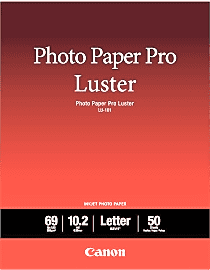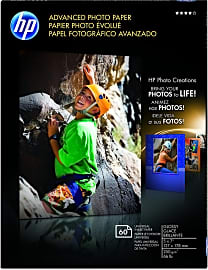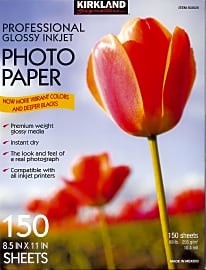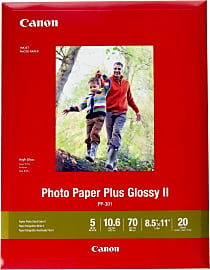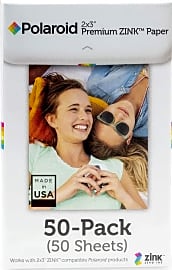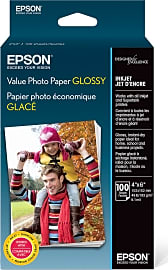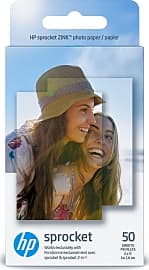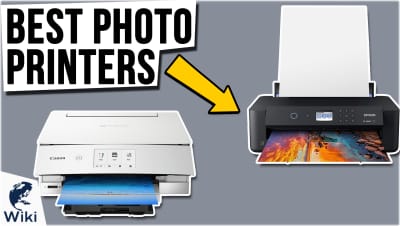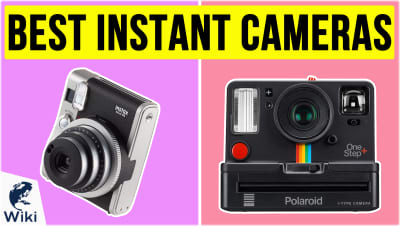The 10 Best Photo Papers

This wiki has been updated 40 times since it was first published in May of 2016. Although it is incredibly convenient to have all of your family photographs and vacation memories stored digitally on your computer and smartphone, how many times do you actually go back and look at those images? Probably not very often. These photo papers allow you to print out your favorite shots and give them places of pride on display in your home, where you can enjoy seeing them every day. When users buy our independently chosen editorial picks, we may earn commissions to help fund the Wiki.
Editor's Notes
March 09, 2021:
We removed the Moab Lasal Exhibition 300 in this update due to availability issues. During our research, we found that the other selections on the list are still the best choices available.
We decided to add another Zink option to the list: Polaroid Premium. Like the HP Zink, these sheets are 2" x 3" with a sticky backing that use an imaging technology where the color is embedded in the paper, thus requiring "zero ink." Also like HP, Polaroid offers a pocket-size printer that can be used to print digital photos onto the paper. But what makes Polaroid stand out is the fact that it also offers Zink-compatible instant cameras so you can take pictures and turn them into wallet-size photo stickers with a single device.
For those who don't have the time or equipment for printing pictures at home, we added Nations Photo Lab Printing to our selection of Special Honors. This online service offers a variety of sizes and paper types at reasonable prices. It also provides color correction and mounting options for professional-looking results.
However you print your photos, you should always make sure that your source material is high-resolution first. No matter how good your equipment and paper are, you're not going to get quality results if you start with a low-res image.
January 08, 2020:
Having a high quality photo printer is pointless if you don't use the proper paper with it — any old card stock just won't do. While many professionals can wax poetic about the granular details regarding color management profiles, gamut, opacity, and grams per square meter, we wanted to distill some of the best options into one list with something for everyone. That includes budget-friendly options great for school projects, like Epson Value, middle-of-the-road choices for business use, such as HP Advanced 5x7 and Canon Plus Glossy II, and selections worthy of professional photographers who sell their prints.
While we wanted to recommend a variety of products ideal for at-home and craft use, we felt there was a lack of top tier, museum-grade offerings for exhibitions and gallery prints, and so we added the well-respected Moab Lasal Exhibition 300 and Hahnemuhle Photo Rag. These are overkill for casual and disposable use, but if you're an artist or want to preserve truly special memories for future generations of your family, these two are the ones to beat. If you're looking to get close to that quality for a lower price tag, Epson Ultra Premium Luster represents a nice middle ground.
We said goodbye to Canon Pixma Matte, which seems to many users to be glorified card stock and doesn't quite meet the standards most laymen have when it comes to quality. And while we still believe Kodak Ultra Premium is a solid gloss option for professional-looking photographs, we felt we had enough of these options to merit the inclusion of the Moab offering instead.
Special Honors
Epson Premium Luster Roll Instead of coming in individual sheets, this option comes in rolls of various sizes, which can be used to create large signs, banners, and backdrops. Of course, this can't be used in a standard printer, but it's a good choice for professionals looking to buy in bulk. epson.com
Nations Photo Lab Printing If you only print photos occasionally or don't want to be limited to a specific size, then you can always send your digital files to an online printing service. This one has a variety of reasonably-priced options and the high-quality prints are delivered in sturdy packaging designed to prevent them from getting bent in transit. The company also offers color correction and mounting. nationsphotolab.com
The Photo Lab In Your Printer: Choosing Photo Paper
With the relatively low-cost and high-quality of printers now available on the consumer market, printing photos at home has never been a more approachable undertaking.
With the relatively low-cost and high-quality of printers now available on the consumer market, printing photos at home has never been a more approachable undertaking. Choosing a great printer is a fine start, but keep in mind that you can't print great photos on regular printer paper and expect them to look like anything special.
The most important consideration to be made when choosing the right photo paper is, fortunately, also the easiest decision to make: it is simply choosing the right size for your needs. If you are planning to print a plethora of standard four-by-six inch photos for use in smaller frames, in an album, or in a scrap book, then by all means you should choose to order paper that comes in that size. The same is true if you are certain you will be using frames or photo albums designed to accommodate five-by-seven inch pictures. And of course for larger images, with eight-by-ten inches being one of the more common sizes, you will need a larger paper size. If you're uncertain which size of photo you will most commonly print, it's always a wise idea to err on the side of larger paper. After all, a sheet of photo paper measuring eight-by-eleven inches can be trimmed down to fit any smaller size, while a smaller sheet can't well be expanded when a large photo is desired.
Next, consider the finish you prefer in your photos, which is to say matte or glossy. There is no objective right or wrong choice when it comes to choosing a minimally-reflective matte finish or a high-shine gloss paper; rather the matter is largely subjective based on taste, with a few other considerations to weigh. Glossy photos look great in the right light settings where the glare of lights or sunshine can be limited or filtered (such as in a gallery or a well-designed home). They also produce excellent color reproduction and depth of contrast, but can be hard to see from many angles in bright light. If you are printing photos for the purposes of sales presentation or to adorn a booth or shop interior, often using matte finish photo paper is wise, because you do not want to risk inhibiting the view of your clientele in anyway. The image may be less vibrant, but it will be readily visible. Also note that glossy photo papers tend to scratch and smudge more easily than matte papers.
Finally, consider how often you print photos and how many you are likely to print in the relatively near future, letting this thought process guide the quantity of photo paper you order at any given time. While ultimately less expensive than prints made by a shop (and certainly more convenient), printing photos at home using your own paper and printer is not exactly cheap. If you print only a few pictures now and then, by all means buy a smaller quantity of paper and use it sparingly. Many packets of photo paper contain fifty sheets and will last some households all year. Others come with one hundred sheets and are more expensive, but end up being the better investment on a per-sheet cost. These larger packets don't necessarily make sense in pure economic terms for those who seldom print, because some photo papers have a tendency to stick together and become damaged, especially in moist environments. Thus spending money to buy in bulk may result in you simply owning a bulk-sized amount of damaged papers.
Tips On How to Print Great Photos at Home
If you own a good printer -- one that is designed with photo-printing capabilities -- and you are using good photo paper, then it is easy to print good photos at home. By the very definition of the process, if you are printing photos at home, you must be using digital images (or images scanned from hard copies into digital form, at least), and therefore you have the opportunity to manipulate and improve your photos before you ever print them.
Print your photos, then let them lie for a half hour or so at least; if you must touch them sooner, gently grasp the sides and the back.
One of the best ways to improve a photo is to crop it, framing the subject and/or setting of the image to maximum effect and removing portions of the tableau that serve no purpose or take away from the beauty or focus of the image. Cropping a photo digitally on your computer (or even on your phone or tablet) is always easier and more precise than doing so by hand, and is also less permanent.
If your pictures often turn out too dark, try brightening them using photo editing software before printing and consider glossy photo paper over matte sheets. Conversely, if your images are often too bright, try darkening them on the computer and switching to matte print paper.
If you remember only one thing about home photo printing, let it be this: give your freshly-printed photos time to dry. Even the best, most efficient printer produces photos that are usually slightly wet to the touch and often easily damaged or destroyed if handled too shortly after production. Print your photos, then let them lie for a half hour or so at least; if you must touch them sooner, gently grasp the sides and the back. Also avoid framing or placing pictures in an album for many hours after they have been printed to reduce the chance that their surface will adhere to the glass or the picture pocket.
A Brief History of the Early Printed Image
The oldest known printed photograph dates from 1826, and was taken by Frenchman Nicéphore Niépce. The basic, grainy image is known as "View from the Window at Le Gras" and, while not in-and-of-itself remarkable, it is a forebear of modern media writ large.
Daguerreotype images were small, often dark, and usually poor in clarity.
The first commonly printed "photographs" the world ever saw were called called Daguerreotypes, and were named for their ostensible inventor, Louis Daguerre, who had in fact worked with Nicéphore Niépce and even received much of his research when Niépce died at a young age. Daguerreotype images were small, often dark, and usually poor in clarity. These images, created in small metal plates, were the only readily-available form of photography from the 1830s into the 1850s.
The early 1850s saw the development of photo exposures using glass plates. These represented a dramatic improvement over the Daguerreotype because the plates could be used to print multiple reproductions of the photograph onto sheets of paper. This not only lowered the costs associated with photography, but also brought the photograph into the mainstream mass market. Witness the proliferation of images of Civil War soldiers, politicians, and carnage as the clearest and most striking example of the early widespread use of the rapidly developing medium.



